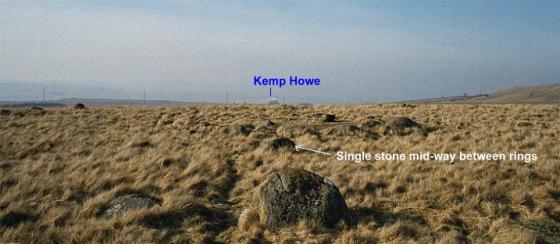
7 November 2014 CE

7 November 2014 CE

Summer 2005. Magnificent!

9/4/06
view to aspers field
wolfy

9/4/06
wolfy

9/4/06
wolfy


Asper’s Field Stone with the Goggleby Stone in the background. Looking S along Shap Avenue alignment.


Kick out the rams
Copey’s shamanic face paint is a big hit with the sheep of Shap



Alignment of the Goggleby Stone, Asper’s Field Stone and Skellaw Hill

Goggleby Stone

June 2002

07/02

Asper’s Field stone – part of the Shap Avenue (in the field next to the Goggleby Stone).

Visited 18.9.10
Directions: From Shap take the turning on the left signposted Shap Abbey (E.H. site) / Keld Chapel (N.T. site) – both worth a visit by the way. Then take the first turning on the left signposted Keld Chapel and look out for the public footpath sign on the left. Park near the sign and take the short but muddy footpath to the left. The stone will quickly come into view in the field on your left. The public footpath takes you right to the stone. It is a large stone approximately 7ft x 6ft x 3ft.
It appears the stone has been re-erected at some point as it is set in a concrete base. Well worth getting muddy boots for!
Oooh, I really liked this stone. I always think there is something so powerful about a lone stone and this one doesn’t disappoint.
It’s easy to find; from the main Shap Road, take the turning to Shap Abbey and then the left turning towards Thornship. It is a narrow road, with passing places and, if you keep looking to your left, you will catch glimpses of the stone. As the road bends to the right, there is a pathway with room for one car to park (without blocking access for walkers, tractors etc). The stone is in the field on the left of the path.
I have never seen anybody else at the stone, although I have seen walkers on the roadside and the last time I visited, on a warm, sunny day, I sat for a good hour, leaning against the stone and just sighing....it’s worth checking out the fallen stones in the next field too and trying to imagine just how magnificent this area must have looked when the avenues were still standing in all of their glory.
Its a whopper. A great big fist of a stone, now standing in concrete shoes. You don’t really get a sense of its deep immensity until you’re right up close. Its footprint is dressed squarely but the looming bulk of it seems to rise like a blobby undressed mass as if the builders lost interest in cutting any more of it half way up.
Unlike nearby Kemp Howe, its not pink.
The Goggleby Stone is beautiful. No matter how much you read about the Shap complexes, you need to visit the sites to appreciate the scale of the thing. It must have been some place back in it’s day and I was lucky enough to have the stone to myself. I walked from Skellaw Hill, which I would recommend, and saw the stone get larger and more impressive.
The concrete bed is a bit disappointiing but what can you do?
Check out the sheep with the shamanic face markings in the next field!
Between the Googleby Stone and the Thunder Stone are several other stones, Aspers Field Stone can be seen in the fields from the Googleby Stone, what would have been the top of the stone if it was upright has several cup markings and what could be a ring.
At NY555153 are 2 other fallen stones in the wall side.
See Fitzcoraldos pics under the Hill of Skulls/Skellaw
The best way to reach the Goggleby stone is to take the road from Shap to the Thunder Stone and turn left on the single track road, parking at the sharp right hand bend, a footpath leads to the stone which lies in the next field. The stone stands huge and proud, spoilt only by the concrete reinforcement at it’s base.
“The symbols on the Goggleby stone are a shallow wide cup mark with smaller one beneath it on the vertical face of the stone. The Asper’s Field stone, leaning inwards now towards the avenue, has a cup with a single ring on top....
The fact that the symbols are used on a very long ceremonial avenue may link them to the ritual of the avenue”.
Prehistoric Rock Art in Cumbria
Stan Beckensall
Tempus Publishing
2002
“Camden in the reign of Elizabeth I described the stones to the west of the village as being of ‘pyramidal form’.
Excavation in advance of the re-erection of the Goggleby Stone found no material which could give a closer date but it was possible to glimpse the method of erecting this 12-ton monolith.
After digging, the hole was partly refilled with loose clay and soil. The stone was then manouvred until it tipped into the hole where it was held at an angle by the loose fill. In this position the effort required to haul it upright would be greatly reduced particularly if shear legs were used. When upright the top of the hole was filled with ‘packing’ or wedging stones”.
Archaeological Sites of the Lake District
T. Clare
Moorland Publishing Co Ltd.
1981
The Goggleby stone was re-erected in a concrete box.
Excavation in advance of the re-erection of the stone found no dating material for the original erection of the stone
Pics of the Goggleby stone and others around Shap




















































































